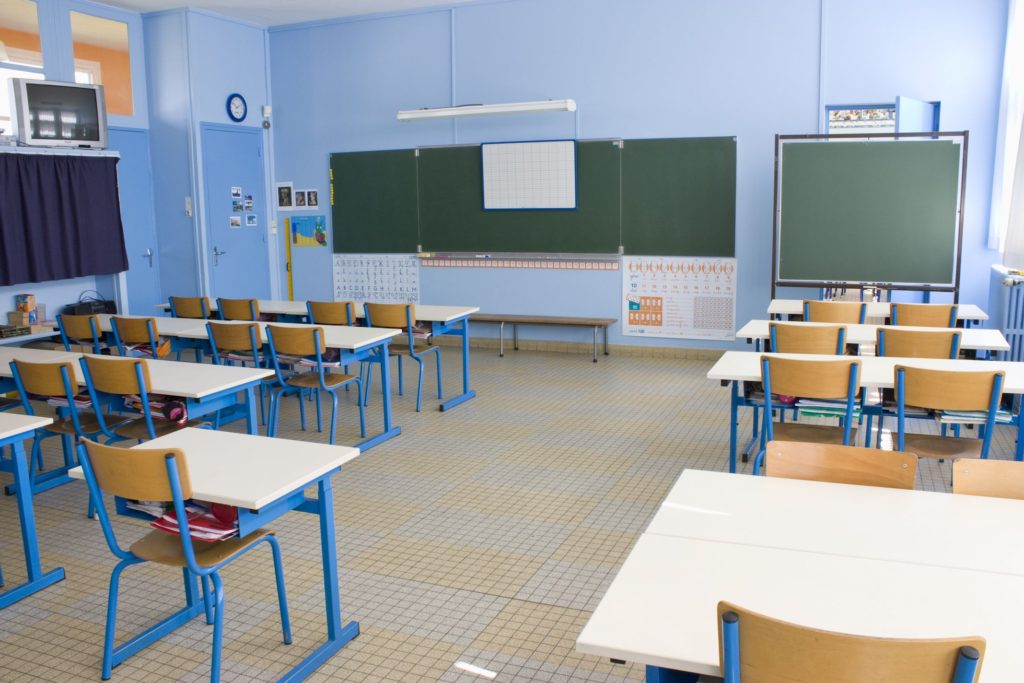 In the years since the horrific shooting at Sandy Hook Elementary School, school districts as well as colleges and universities have faced increased pressure to ensure an effective level of security. In some cases, administrators have turned to products that are readily available for purchase on the internet, usually at a lower cost than traditional door hardware. The challenge with these retrofit security devices (also known as classroom barricade devices) is that most of them do not meet the model code requirements for free egress, fire protection, and accessibility, especially when installed in addition to existing latching hardware.
In the years since the horrific shooting at Sandy Hook Elementary School, school districts as well as colleges and universities have faced increased pressure to ensure an effective level of security. In some cases, administrators have turned to products that are readily available for purchase on the internet, usually at a lower cost than traditional door hardware. The challenge with these retrofit security devices (also known as classroom barricade devices) is that most of them do not meet the model code requirements for free egress, fire protection, and accessibility, especially when installed in addition to existing latching hardware.
During the 2018 code development cycle, a section was added to each of the model codes, which upholds the requirements that have been included in these codes for decades, as well as adding an additional requirement to facilitate authorized access by school staff and emergency responders when a classroom door is locked. The 2018 edition of the International Fire Code (IFC) added the following language, specific to locks on classroom doors:
1031.2.2 Locking arrangements in educational occupancies. In Group E occupancies, Group B educational occupancies and Group I-4 child day care occupancies, egress doors from classrooms, offices and other occupied rooms shall be permitted to be provided with locking arrangements designed to keep intruders from entering the room where all of the following conditions are met:
1. The door shall be capable of being unlocked from outside the room with a key or other approved means.
2. The door shall be openable from within the room in accordance with Section 1010.1.9.
3. Modifications shall not be made to existing listed panic hardware, fire door hardware or door closers.
4. Modifications to fire door assemblies shall be in accordance with NFPA 80.
The 2018 editions of the International Building Code (IBC) and NFPA 101 – Life Safety Code added similar requirements to those of the IFC. These code changes help to clarify that classroom doors are intended to provide free egress at all times, products used on fire doors are subject to the testing requirements for components of a fire door assembly, and classroom doors must be usable by all building occupants – including people with physical disabilities.
Read this Decoded article for more information about the code requirements that apply to classroom security, then proceed to the review questions below.
~~~
Review Questions
1. Beginning with the 2018 editions, which model code(s) – used across the US – include requirements specific to classroom security?
- International Building Code (IBC)
- International Fire Code (IFC)
- NFPA 101 – Life Safety Code
- All of the above
2. Most of the model code safety requirements pertaining to classroom security have been part of the codes for decades. What new requirement has been added to the codes?
- Schools must keep all classroom doors locked at all times
- Locked classroom doors must be able to be unlocked from the outside with a key or other approved means
- All classroom doors must be keyed alike, and keys distributed to staff members
- Each classroom must have a way to call the police if an emergency occurs
3. Which of the following security methods would meet the model code requirements and accessibility standards for classroom doors?
- Panic hardware with a separate deadbolt
- Foot-operated bolt that engages a strike in the floor
- Listed classroom security lockset – mechanical or electrified
- Device that clamps to existing hardware to prevent the door from being opened
Answers: 1 – D, 2 – B, 3 – C
